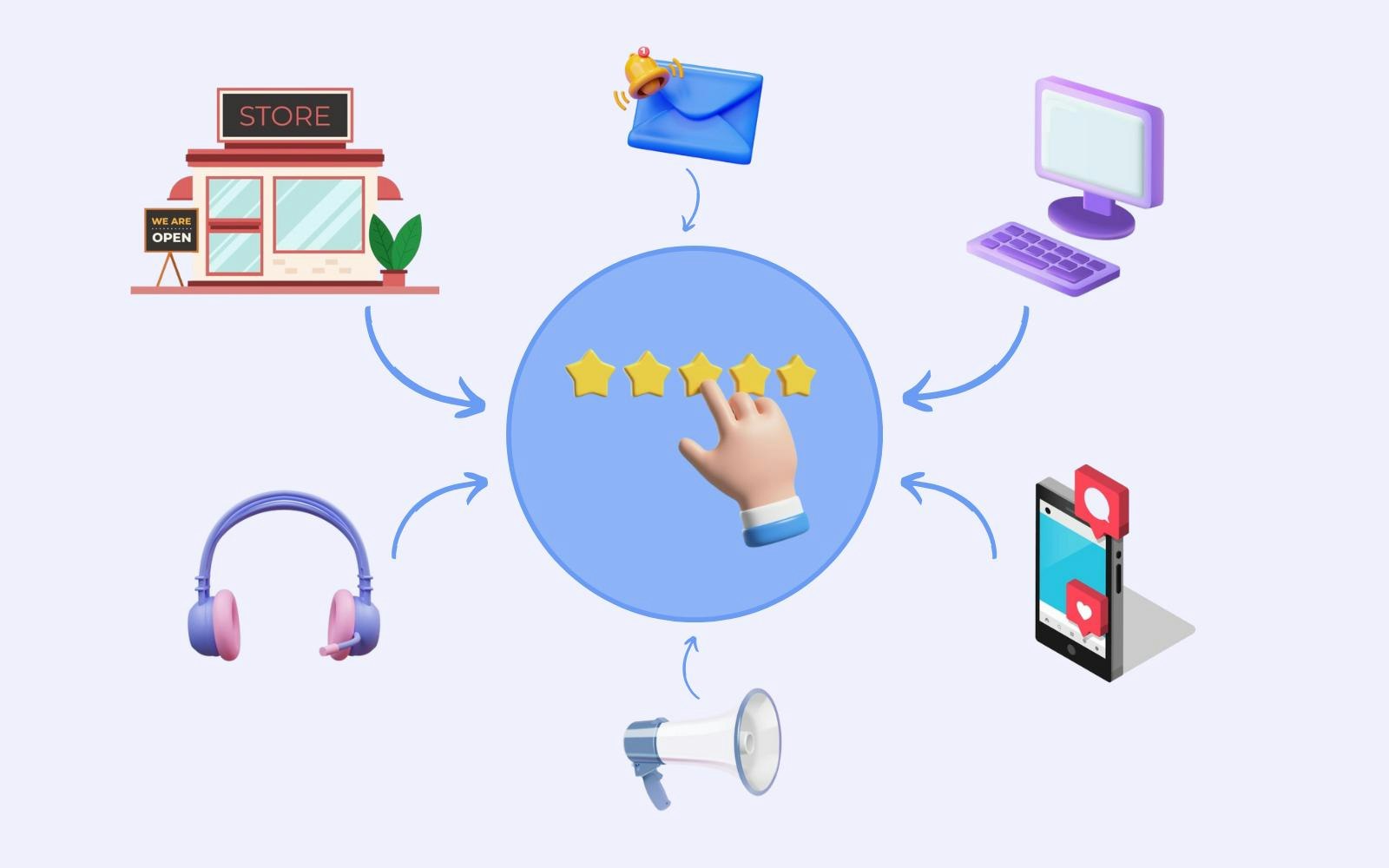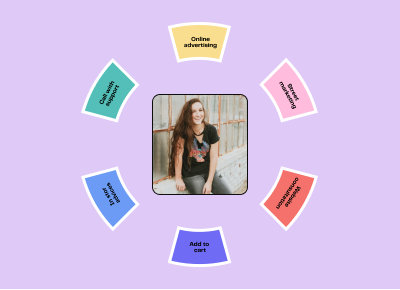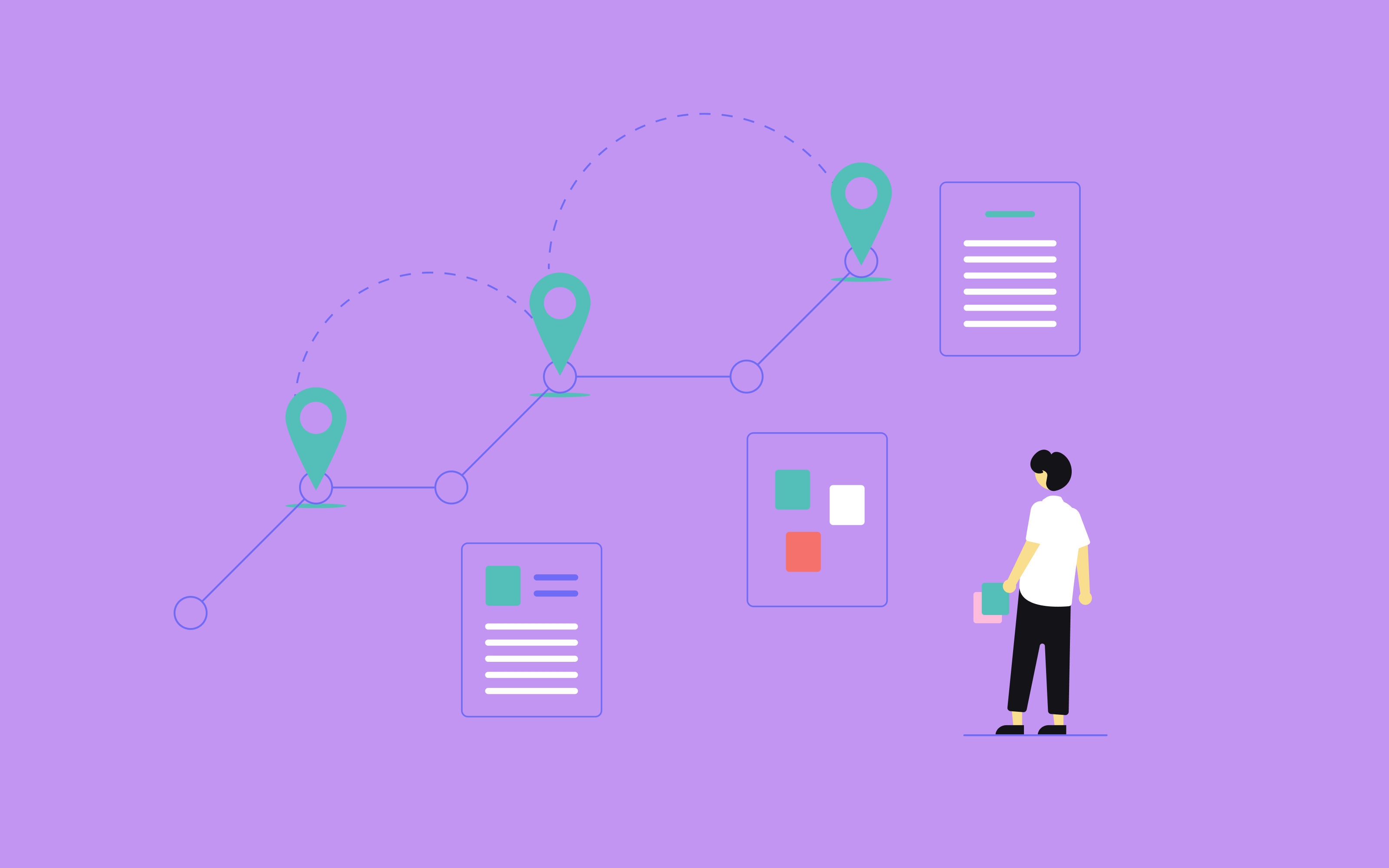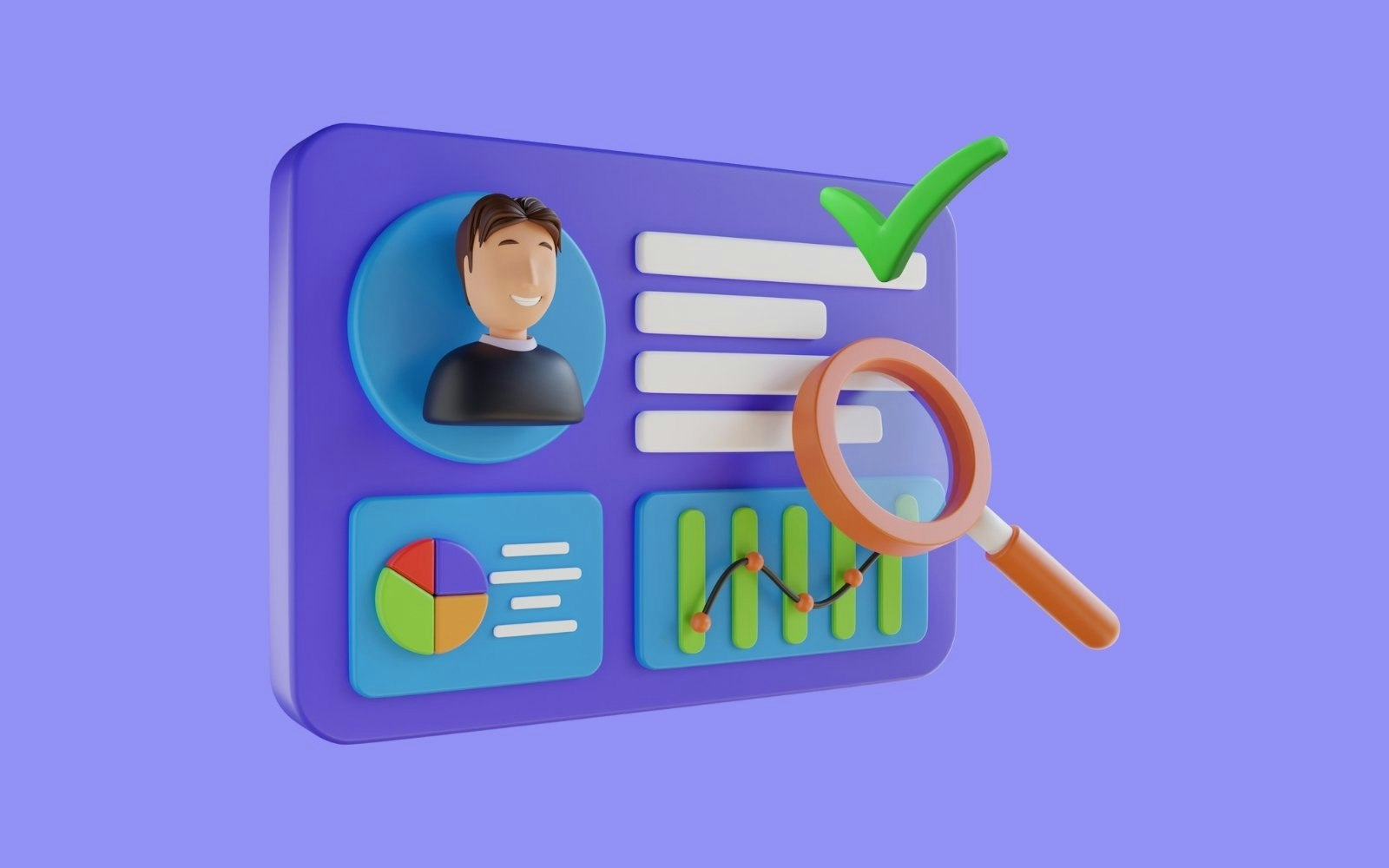
All you need to know about first-party data
8min • Last updated on Feb 13, 2025

Olivier Renard
Content & SEO Manager
Since 2016, the gradual disappearance of third-party cookies has resulted in advertisers losing access to 60% of previously exploitable data. This shift has been driven by regulatory changes, the rise of ad blockers, and restrictions imposed by certain web browsers.
This figure could have reached 90% had Google gone ahead with its planned deprecation of third-party cookies in Chrome. In this new landscape, first-party data has become essential for businesses that want to continue leveraging reliable and compliant data.
Key Takeaways:
The progressive phase-out of third-party cookies makes first-party data indispensable for businesses.
First-party data is collected directly from users via websites, apps, stores, and CRMs.
By nature, this data is more reliable and compliant with regulations, making it invaluable for improving personalised customer experiences.
Businesses must implement effective strategies to collect and activate first-party data. A Customer Data Platform (CDP) simplifies this process.
👉🏼 Find out what first-party data is and why it has become a key asset in marketing. Learn how to collect and leverage it to optimise your digital strategies. 🚀
What is First-Party Data?
First-party data refers to data collected directly by an entity from its audience via its own channels: website, mobile application, CRM, in-store transactions, exchanges with its departments (customer, technical, marketing).
This is also known as ‘first-hand’ data.
Unlike third-party data, which is sourced from external providers, first-party data is gathered from direct user interactions. Since it is collected with the user's explicit consent, it is therefore reliable, relevant, and compliant with data protection regulations.
As third-party cookies gradually disappear and privacy regulations tighten (GDPR, CCPA, etc.), businesses must take back control of their data. First-party data offers several key advantages in this context:
Accuracy and reliability ;
Regulatory compliance ;
Better customisation ;
Independence from advertising platforms.
For example, an e-commerce company can exclude all its recent customers from its campaigns, so as not to target people who are unlikely to convert. All without relying on third-party tracking.

How DinMo helped Ankorstore reduce its CAC by 20%.
Why is first-party data strategic?
First-party data is becoming essential in marketing for a number of reasons.
The decline of third-party cookies and regulatory changes
Unlike first-party cookies, third-party cookies are used by external websites. For years, they have been key tools for targeting and tracking internet users, but they are now being phased out:
Safari (Apple) and Firefox have already blocked third-party cookies by default. Google Chrome has considered deleting them.
Ad blockers are increasingly popular, limiting the reach of cookie-based tracking.
GDPR in Europe and CCPA in California enforce strict rules on data collection and usage, making access to third-party data more difficult.
To maintain personalisation in marketing campaigns, businesses must develop their own data sources instead of relying on third-party providers.
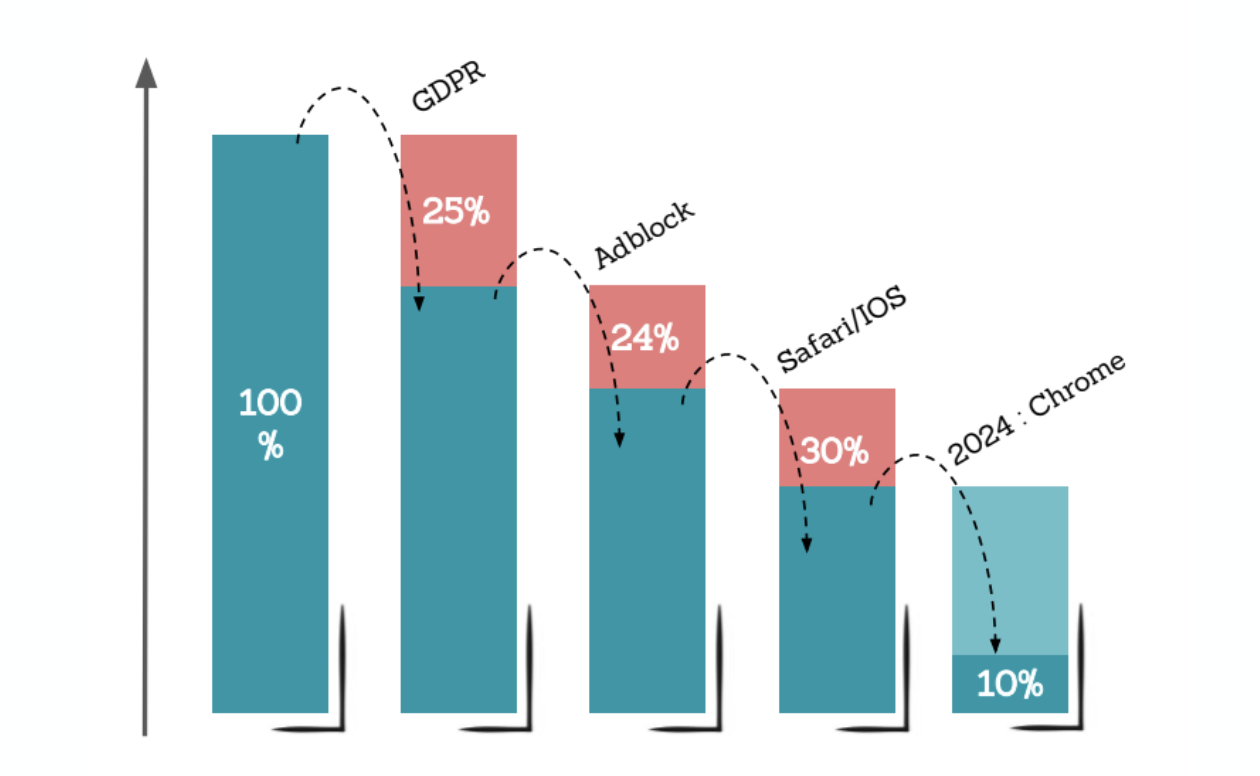
The gradual end of 3rd party cookies
Reliability and accuracy compared with third-party data
For years, third-party data was used to refine audience targeting, but it comes with several limitations:
Unreliable accuracy : Often aggregated, outdated, or imprecise.
Limited context : It doesn’t directly reflect user engagement with a specific brand. Its lifespan is restricted.
Regulatory restrictions : Its use is increasingly restricted due to privacy laws.
In contrast, first-party data provides:
Up-to-date and accurate information from direct interactions.
Full compliance with privacy regulations, as it is collected with explicit user consent.
Better customer insights, helping businesses identify preferences, actions, and behaviours.
By leveraging first-party data, businesses can optimise customer journeys.
Enhancing personalisation & customer experience
An effective marketing strategy relies on the ability to deliver the right message, at the right time, to the right person. First-party data enables this through:
More accurate audience segmentation, based on actual user behaviour.
Personalised recommendations and offers, tailored to users' preferences.
Content and customer journey optimisation, using real insights rather than assumptions.
For example, Amazon leverages first-party data to recommend products based on a user’s purchase history and browsing behaviour.*.
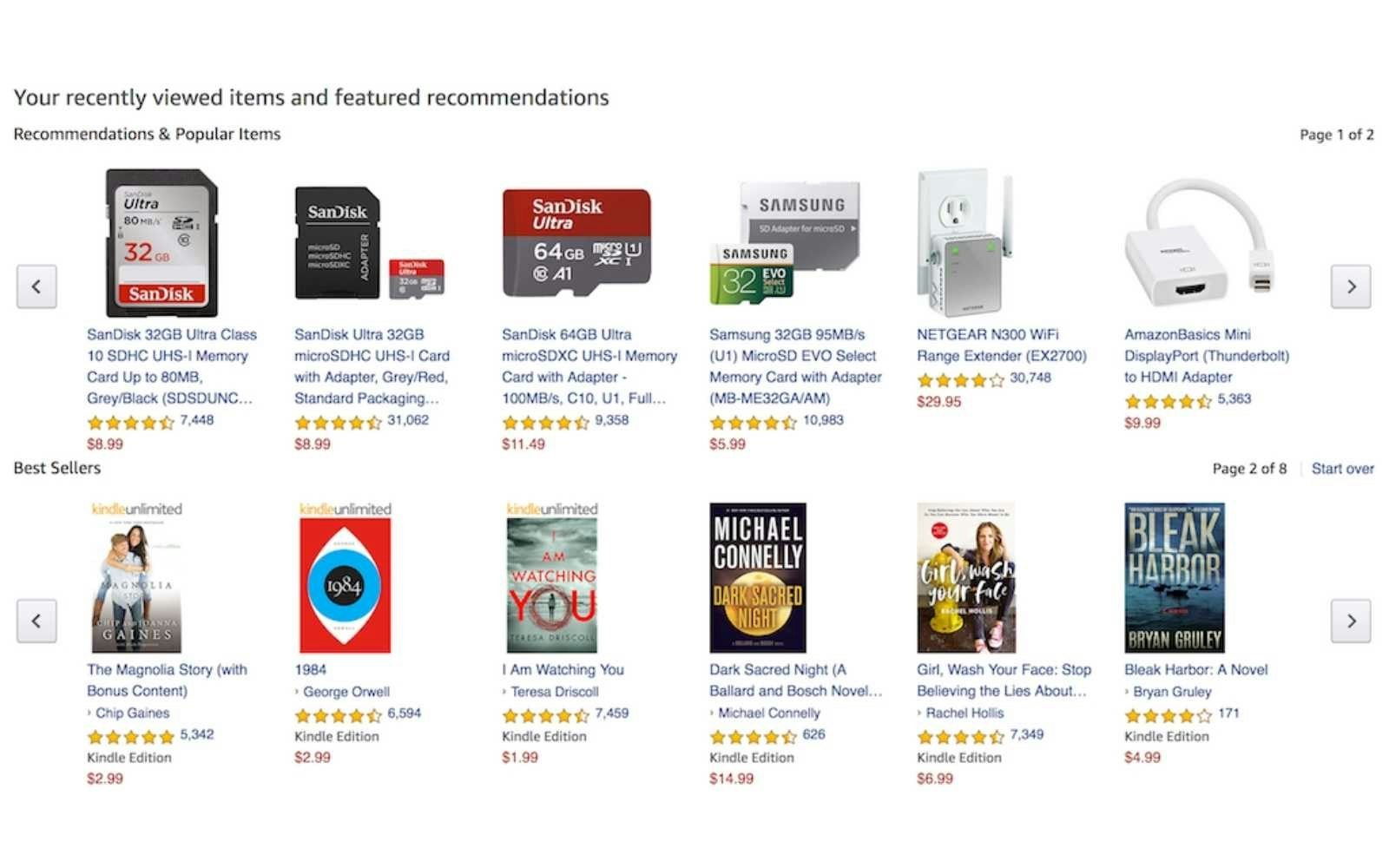
Personalised recommendations (Source: Amazon)
Reducing acquisition costs & improving ROI
Online advertising costs have been rising steadily (Tinuiti), while campaigns relying on third-party data are becoming less effective. Businesses must optimise their marketing spend.
First-party data make it possible to :
Targeting more effectively, reducing Customer Acquisition Cost (CAC).
Building lookalike audiences on advertising platforms (Meta, Google) using reliable data.
Maximising retention and Lifetime Value (LTV) by delivering more relevant messages tailored to users' needs.
👉 First-party data is no longer optional—it is a strategic necessity. It ensures more precise, cost-effective, and compliant marketing strategies.
How to collect this data effectively?
Collecting first-party data in a compliant and efficient way has become a performance issue. This data must be reliable, usable and obtained in compliance with regulations.
Let's take a look at the possible sources and best practices for optimising data collection.
Main collection sources
Sign-up forms & newsletters
They are used to collect valuable information (name, email, preferences) in exchange for a benefit. This could be exclusive content, a welcome discount or the sending of a newsletter.
Purchase & browsing history
Every interaction on a website or mobile application generates data:
Purchase history: products ordered, frequency of purchases.
Browsing behaviour (pages viewed, additions to basket, basket abandonment), which can be used without third-party cookies;
Payment methods and frequency of transactions.
Analysis of this data provides insights into customer behaviour and interests. RFM segmentation (recency, frequency, monetary value) makes it easier to create audiences from this information.
CRM & Customer Interactions
Interactions with customer support, a chatbot, or a customer advisor are also valuable data sources. They help businesses better understand user expectations and refine their offerings and services.
Loyalty programmes & mobile apps
Loyalty programmes and mobile applications are excellent channels for collecting first-party data. They encourage users to share information in exchange for rewards (points, discounts, exclusive access).
Major brands like Sephora and L’Oréal have embraced this approach, collecting vast amounts of data on their audience through their loyalty programmes. Customers share their beauty preferences to receive personalised recommendations and exclusive offers.
Best practices for compliant & effective data collection
Transparency and user consent
Provide clear information on the use of data (accessible and explicit confidentiality policy).
Obtain free, informed, specific and unambiguous consent (tick box, customisable tracking preference) in compliance with privacy protection regulations such as the GDPR or the CCPA.
Encourage engagement with incentives
Offer a personalised experience in exchange for data (exclusive access, tailored recommendations).
Provide rewards (discounts, gifts, premium access).
Incentivised opt-ins create a win-win situation—the brand delivers value to its customers while enriching its database.
Leveraging Zero-Party data
Zero-party data consists of information voluntarily provided by users, making it highly valuable. To collect this data, brands should:
Allow consumers to share their preferences voluntarily (surveys, interactive quizzes).
Gather feedback and reviews to improve the user experience.
👉 Effective data collection must be both engaging and compliant. When properly utilised, these insights enhance audience understanding and optimise marketing strategies.
Zero, First, Second and Third-Party Data: what are the differences?
Each type of data has its own specific characteristics, advantages and limitations. This comparison table will give you a better understanding of the differences between them.
Criteria | Zero-Party Data | First-Party Data | Second-Party Data | Third-Party Data |
|---|---|---|---|---|
Definition | Data provided voluntarily by the user | Data collected directly by an entity via its own channels | Data obtained from a strategic partner | Data purchased or sourced from external suppliers |
Collection source | Forms, quizzes, user preferences | Websites, CRM, transactions, customer interactions | Audience sharing between partner companies | Aggregators, DMPs, advertising platforms |
Example of data | Product preferences, declared interests | Purchase history, browsing behaviour, interactions | Customer data of a partner company | Demographic data, anonymised advertising audiences |
Level of reliability / level of control | Very high (declared data). Exclusive ownership | High (direct and verified collection). Exclusive ownership | Varies according to the quality of the partner. Shared control. | Highly variable (risk of inaccuracy or obsolescence). Minimal control |
Uses and benefits | Marketing personalisation, advanced segmentation | Advertising targeting, loyalty, UX optimisation | Database enrichment, audience expansion | Broad targeting, advertising campaigns |
Limitations | Limited volume, depends on voluntary sharing | Base restricted to known users | Dependence on partners, variable quality | Uncertain reliability, regulatory restrictions |
Zero vs First vs Second vs Third party data
Advertisers now have to rethink their targeting without third-party cookies. The Privacy Sandbox is an alternative proposed by Google. Its aim is to group internet users by areas of interest rather than tracking them individually.

Zero vs First vs Second vs Third party data
Which tools and technologies help leverage first-party data?
Once collected, first-party data must be structured, analysed, and activated effectively to unlock its full potential. Here are the key solutions businesses use to achieve this.
Tracking and Analytics Tools
First-party cookies provide valuable real-time insights to tracking platforms in the form of anonymised events. Analytics tools help track user behaviour to optimise the customer journey.
Google supports first-party data usage with two key features recently introduced in GA4:
Customer Match → Allows businesses to use hashed customer data (emails, phone numbers) to create targeted audiences and improve remarketing on Google Ads.
Enhanced Conversions → Improves advertising performance measurement by sending encrypted first-party data for more accurate conversion attribution.
CRM and customer management tools: personalising interactions
A CRM (Customer Relationship Management) brings together customer information (purchase history, support interactions, preferences). Essential for customer loyalty and relationship marketing, it makes it easier to personalise interactions.
Examples : HubSpot, Salesforce
Customer Data Platforms (CDP): unifying and activating Data
CDPs centralise all the data from different channels (website, CRM, online or in-store purchases, customer interactions). They take over from DMPs to offer a unified view of users and facilitate data activation.
Take the example of a retail chain that collects first-party data via its loyalty programme, e-commerce site and physical shops. By integrating this data into a CDP, it can segment its audience and improve its marketing campaigns by proposing personalised offers based on purchasing behaviour.
DinMo’s composable CDP is a lightweight and modular solution that integrates with existing data infrastructure. It is more cost-effective and quicker to deploy than traditional CDPs.
Harnessing first-party data is crucial for businesses looking to optimise their marketing while reducing reliance on third-party cookies. DinMo enables businesses to segment and activate first-party data by integrating it with existing marketing tools. Contact us today for a free trial!
*Source: Amazon













